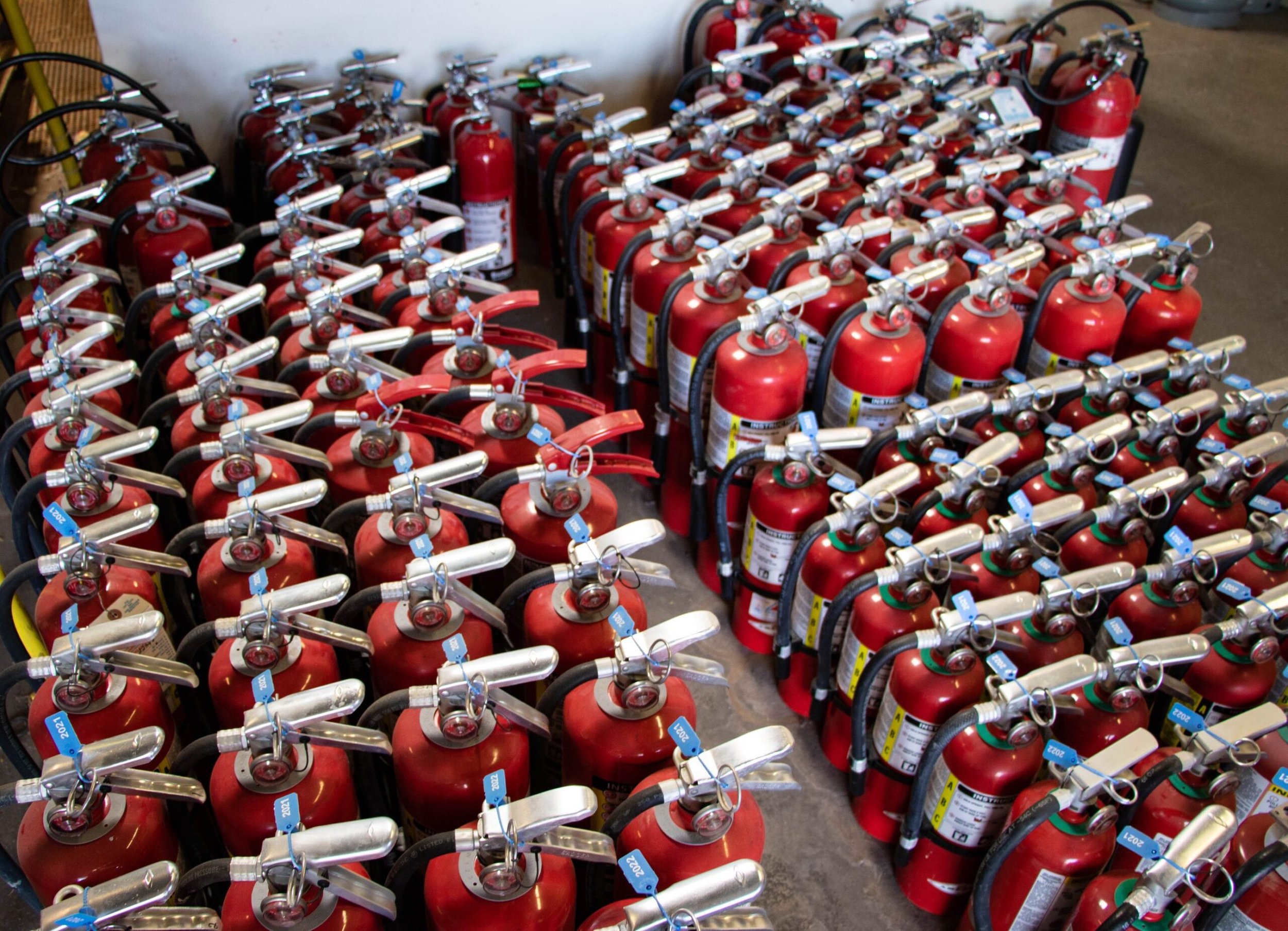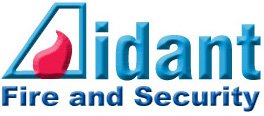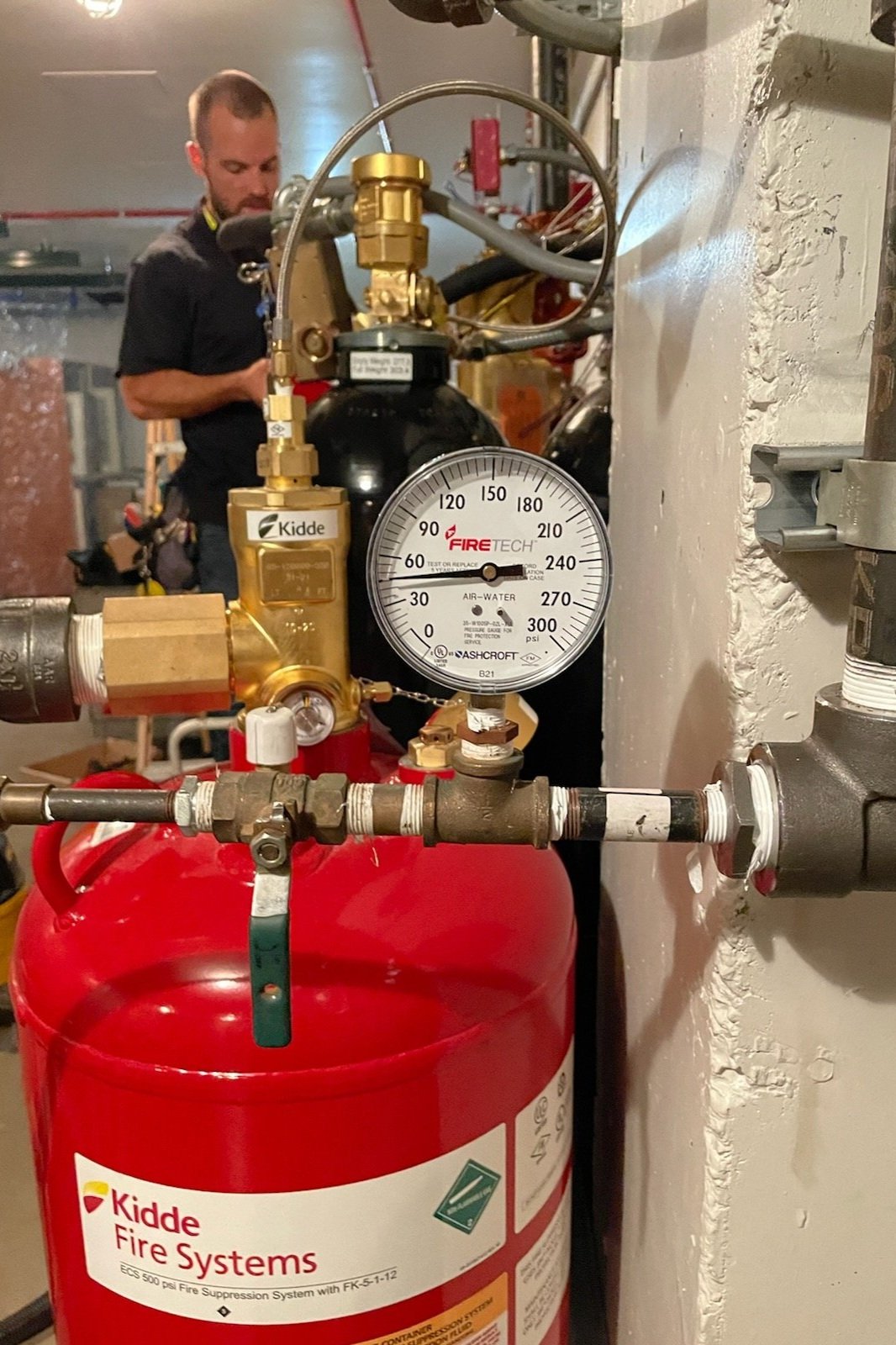
Fire Protection
Fire Extinguishers
The servicing of fire extinguishers, which are pressure vessels with operating pressure of100 to 2000 PSI, demands trained, qualified, and licensed service technicians using proper equipment and materials.
The maintenance of portable fire extinguishers is governed by DOT (Department of Transportation) and applicable standards of NFPA (National Fire Protection Association). Aidant strictly enforces these minimum guidelines to ensure that the fire extinguishers operate properly and safely.
Fire Alarms
The most common cause of false or nuisance alarms in alarm systems are a lack of periodic testing and maintenance. Even the best alarm system can be rendered ineffective if not properly installed, inspected and maintained. Damage, dirt, remodeling, poor installation and age are some ways that can affect a system’s performance.
Aidant services all types of fire alarm systems. Thorough maintenance is as important as the correct installation of a system. Our professional, NICET certified experts are fully equipped with the latest technology in fire alarm test equipment and able to service all types of fire systems.
Fire Sprinklers
Our professional, NICET certified experts are fully equipped with the latest technology in fire sprinkler testing equipment and able to service all types of fire equipment.
Annual Fire Sprinkler/Fire Pump Maintenance (Wet Pipe)
This is a flow test checking performance and operation of the fire pump and consists of running water through the entire system to determine if there are obstruction and leaks. Valves are checked for proper sealing.
Quarterly Fire Sprinkler Systems Service (Wet Pipe)
This service includes a complete functional testing and inspection of valve operations, gauges, water pressure, water flow, gong operations, obstructions in piping, leaks, corrosion, and mechanical damage to the system. Since this is the only plumbing system where water sits dormant and does not flow, in-line corrosion of piping and fittings may plug the sprinkler orifices in a fire situation or build system pressure causing unwanted water discharge and mechanical damage.
Semi-Annual Preaction Fire Sprinklers Service (Dry Pipe)
This service includes an operational trip test of the dry alarm valve; testing of detectors, control panel, battery system, manual release station, and audio visual alarms; and inspection of sprinkler heads, piping, and hangars. A complete detailed report on system service testing is provided.
Fire Hoses
Annual Maintenance
A re-racking and physical inspection of the hose, coupling, nozzle, rack, and cabinet for damage, tampering, or wear. Parts are repaired or replaced as need.
Hydrostatic Testing (Annual)
This is a required pressure test designed to check for leakage and the elasticity and physical condition of the hose.
Recoupling
During the inspection, if it is found that there are damaged threads, corrosion, coupling slippage on the hose, out-of-round, or the swivel not rotating correctly, the couplings are replaced in our shop.
Fire Doors/Emergency/Exit Lights
Fire Door Annual On-Site Maintenance
Each door is trip tested from the fusible link line to check proper closure.
All pulleys, rails, and mechanisms are inspected for damage.
Door is reset and adjusted into the open position.
Old or painted fusible links will be replaced.
Emergency & Exit Lights Annual On-Site Maintenance
Inspect and test batteries, lights, cabling, voltage, and charger.
Clean each emergency light and lens as required.
Complete report indicating exact current status and performance.
Fire Suppression
Our professional servicemen are NICET certified and equipped with the latest technology to help ensure your fire suppression systems will operate properly. At least semi-annually these systems are testing and inspected to verify proper operation of all detection and releasing devices, as well as verifying the quantity of fire suppression chemical such as CO2, FM-200, Halon, etc.
Kitchen Hoods & Paint Booths
One of the most critical fire protection systems in the restaurant industry is the wet chemical kitchen hood fire suppression system. In the event of a fire over the cooking appliances or in the ductwork, the first line of defense is the kitchen hood fire suppression system. Engaging the manual pull station can activate the fire system or more commonly, the system will automatically discharge when the fire reaches a certain temperature. The discharge of the system will also shut off the gas and turn off any electrical appliances. The kitchen should also have a K-Class type portable fire extinguisher, which is designed specifically for use over cooking surfaces. These systems require strict semi-annual maintenance and inspection.
Paint spray booths such as vehicle paint booths, open face, or general industrial are similar in nature to operation as the kitchen hood systems, however, they utilize a dry chemical for fire suppression. They also require strict semi-annual maintenance and inspection.









